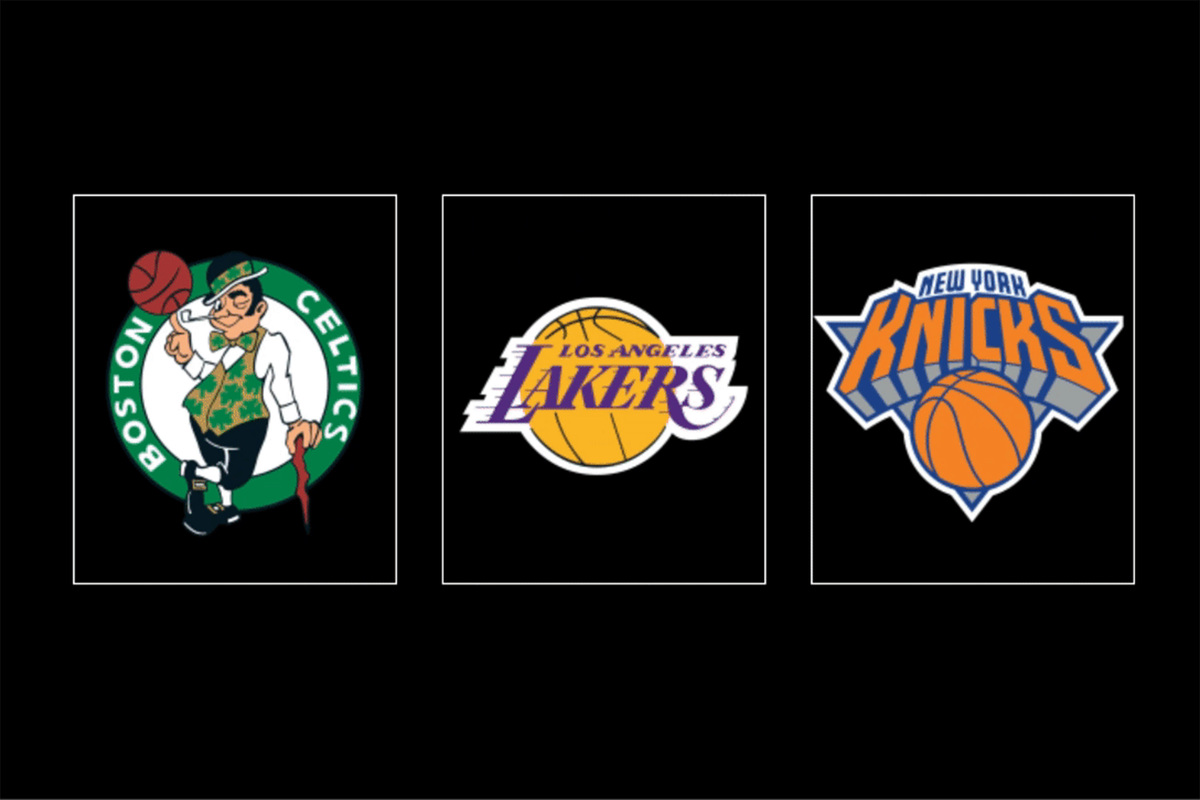The Denver Nuggets did not fall out of a coconut tree. The context of everything that happened before last year’s title run was planted by Tim Connelly, now the Minnesota Timberwolves president of basketball operations, who once ran the Nuggets, where he drafted Nikola Jokic and Jamal Murray and made the Aaron Gordon trade.
The latter was, in hindsight, a paradigm-shifting steal that put the finishing touches on the Nuggets’ Bop It–style variability. With Gordon added to the mix, it didn’t matter whatever scheme an opponent deployed, Jokic could press a button to shoot, screen, kick it out, hand it off, and, now, lob it up. Two years later, that offensive flexibility led the Nuggets to their first title in franchise history.
Connelly, who made the deal in Jokic’s first MVP season, was passionate about finding players to complement the Joker’s elite play and oracular vision, telling reporters at the time, “We’re going to see a level of sustained basketball that I don’t think we’ve ever seen in this town.” Denver’s early architects, in Jokic’s second year, were offensive coordinators by the names of Chris Finch and Micah Nori, now the head coach and top assistant, respectively, on Minnesota’s bench. They were responsible for “getting away from set plays and into more planned improvisation.” But by the time the Nuggets hoisted the good ol’ Larry O’Brien last summer, Connelly, Finch, and Nori had all taken jobs in Minnesota, tasked with finding a way to destroy the blueprint they helped design.
While Denver’s road to contention was a slow burn, the Wolves shot up from the basement to the top floor. Connelly’s first move with the team, a controversial all-in deal for Rudy Gobert that relinquished four first-round picks and multiple rotation players, was dubbed a historically bad trade after Minnesota splintered out of the gates last season, imploded in the play-in by way of punches thrown at teammates and walls, and was mercifully put down by the Nuggets in a first-round gentleman’s sweep. Since then, Anthony Edwards, buoyed by his Team USA experience and spongelike reaction to Finch’s hard coaching, has morphed into a superstar on the court and a steadying force in the locker room. Gobert, whose ability to anchor a modern defense was once again called into question, just locked up a perimeter-oriented offense featuring Kevin Durant and Devin Booker. Jaden McDaniels, who broke his hand punching a wall prior to last season’s first round, has morphed into an All-Defensive force. A year later, the Wolves, who have exceeded their training camp expectations—home court and a first-round win—are dreaming of the Finals. How they fare against Denver will be the true litmus test of their progress and how much their familiarity with the champs matters.
For the Nuggets, victory against Minnesota’s defense, the top-ranked unit in the league this season, would be the ultimate affirmation of their read-and-react monster: Even if you understand it, you can’t solve it. But speaking of monsters, the Nuggets have never faced a defense with the Wolves’ length, ball pressure, depth, variability, and reactivity.
“Heisenberg’s uncertainty principle,” Brian Phillips reminds us, “holds that the speed and position of a particle cannot be known simultaneously.” Tell that to Gobert and McDaniels. Uncertainty—and its offspring, possibility—is at the heart of what has made Denver unbeatable. The Nuggets run set plays, sure, but their goals are never preordained. The typical pecking order of desired outcomes (layup, open 3, iso, etc.) is replaced by the supercomputer in the brain of the Joker, who, until now, has not met a defense with his processing speed. But Gobert, the head of Minnesota’s snake, is not only lengthy enough to be in two places at once, but also intuitive. Like Jokic, there are times he appears to have eyes in the back of his head, squaring up perfectly to defend the ball, with a sixth sense for sagging back when a screener opens up an off-ball player for a baseline cut.
The Wolves, as they did in the regular season, will likely match Karl-Anthony Towns with Jokic and put Gobert on Gordon so their star center can roam the paint and cast the longest shadow in the league. Prior to their regular-season clash in November—the only game in which all the principal actors were healthy—Nori laid out Minnesota’s strategy in a pregame segment called “Inside the Play”: Don’t let Murray get loose in the fourth quarter, and, when possible, funnel shots through Gordon. One only needs to flash back to Gordon’s mile-high exploits against the Lakers in Game 3 of this year’s first round to remember just how punishing a gambit that can be, but defensively, Anthony Davis relies more on explosive jumps (read: commitment) than Gobert, whose length allows him to cover more ground without selling out.
Beyond that, Minnesota’s overall length is a multiplying factor that gives everyone cover. Towns, who will have to man the deadly Jokic-Murray pick-and-roll, can play for the jumper, knowing Gobert is behind him, waiting at the rim. It also helps that Minnesota’s guards are among the best screen navigators in the NBA. And if Gobert does have to overcommit on a drive, Edwards, McDaniels, or Nickeil Alexander-Walker—the latter two of whom are the most physical wings in the league—can slot down to bump Gordon and race their way back out to the 3-point line. At its best, Minnesota creates turnovers with rotations that are a step ahead of the defense.
Sometimes, the mere threat of interceptions is enough to scare teams into twitching submission. This was the great promise of the Gobert trade: a conservative scheme with aggressive personnel, which can turn defense into offense without risking overexposure. There’s also a paradoxical, tactical plot line at play for Minnesota in a season that has been defined by an emphasis on maturity: Gambling on every play is rarely a good idea, but the occasional McDaniels or Alexander-Walker nosedive into the passing lane could be the key to making Jokic, one of the game’s great thinkers, overthink.
At some point in the series, by way of back-downs that inevitably land Towns in foul trouble, Jokic will baby-hook this plan to smithereens. The Wolves’ likely first response will be swapping Towns out for Naz Reid, a good defender who can allow the Wolves to buy a few more possessions. But Jokic will eventually dust the 264-pound big man too. Light work. He shot 62 percent on short midrange jumpers this season, for anyone who’s counting.
The Nuggets will want to spread Minnesota out as much as possible. The best way to do that, and I’m being fully serious, is by trying to force the soon-to-be four-time Defensive Player of the Year with a 7-foot-9 wingspan to guard their best player. The Nuggets’ half-court offense will hinge on how often it can dictate these terms. If Gobert guards Jokic, the world opens up for Denver. If not, the Nuggets will have to make tough shots through the tiniest cracks of daylight. This moment, in particular, feels like a bad time to bet on the Nuggets’ ability to do that. Murray is walking with a limp, and Kentavious Caldwell-Pope sprained his ankle in the closeout game against the Lakers. Michael Porter Jr. was the Nuggets’ most consistent source of non-Jokic offense in the first round, but he’ll face a range of lengthier defenders against the Timberwolves.
The Nuggets’ offensive rating against Los Angeles was 113.4, their lowest in their last five playoff series and 8.9 points worse than the rate at which they scored against the Lakers in last season’s Western Conference finals. Against the Wolves in the regular season (I know), that figure was just 109.1, though injuries played a role.
Before they were champs, emotional lethargy was this team’s death knell. A few weeks ago, during a dry spell for the Nuggets, Jokic was asked whether he thought the team could flip the proverbial intensity switch come playoff time. “I think that doesn’t really exist, that switch that you can turn. I think you need to build it,” he said. But he also reminded reporters that the Nuggets were slumping en route to the postseason last year too. Maybe Murray is truly hurt. Maybe the good team merchant just wasn’t fired up by a matchup against the Lakers in the way he could be against the Wolves.
Despite heavy minutes from Jokic and Murray, Denver’s bench has been borderline unplayable this postseason, rungs below last season’s Bruce Brown–led unit. If the series goes long, attrition will play a role. Six Minnesota players averaged double digits against the Suns in the first round. Reid, the Sixth Man of the Year, wasn’t even one of them.
And thanks to Reid, the Wolves (though they like playing Kyle Anderson at the 4) could go the whole series without going small. Jokic, so used to operating above the fray, will have to see through the trees to navigate his way out of this forest, teeming with predatory Wolves. The NBA’s best problem solver has never faced a riddle like this.

